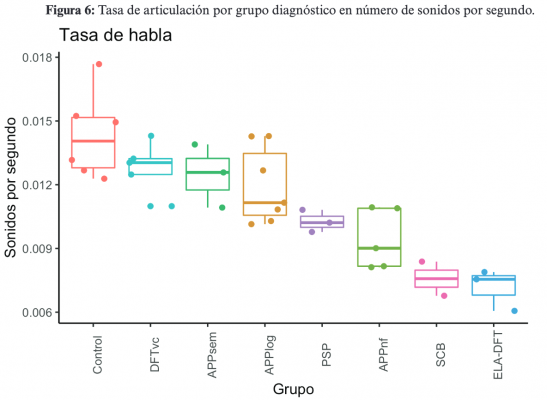El ritmo y la tasa de habla como ayuda diagnóstica en síndromes neurodegenerativos de los lóbulos fronto-temporales

Temporal variables have proven to be an effective tool to characterize speech in neurodegenerative diseases and primary progressive aphasia variants, but the evidence available so far is essentially limited to English. This article analyses, by means of a small sample of seven patient groups and a control group (total n = 34; control group = 6; progressive primary aphasia, en three variants = 15; fronto-temporal dementia in two variants = 9; supranuclear progressive palsy = 3; cortico-basal syndrome = 2), the temporal parameters of speech rate, vowel duration, consonant duration, and nine rhythmic metrics (%V, %C, ΔV, ΔC, VarcoV, VarcoC, rPVI-V, rPVI-C, nPVI-V). The results indicate that speech rate is slower in patients with primary progressive non-fluent aphasia (APPnf), amyotrophic lateral sclerosis (ALS), or corticobasal syndrome (CBS) than in controls. These three clinical groups, as well as those suffering from progressive supranuclear palsy (PSP), have longer segmental durations, especially in consonants. Among the rhythm metrics, %C, ΔV and rPVI-C also allow to differentiate between groups, specifically, between control and APPlog, ELA-DFT y SCB.